Archive for the ‘hair loss complications’ Category
Friday, March 16th, 2012
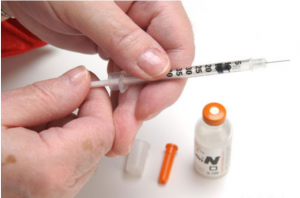 Diabetes is a common disease that has fallen upon many Americans. Often times people suffering from Diabetes will come to US Hair Restoration wondering whether they qualify for a hair transplant procedure. The question we often ask our patients is how well their diabetes is maintained. Diabetes is a common disease that has fallen upon many Americans. Often times people suffering from Diabetes will come to US Hair Restoration wondering whether they qualify for a hair transplant procedure. The question we often ask our patients is how well their diabetes is maintained.
Patients who have diabetes are able to have successful hair restoration procedures as long as the condition is under control. For many years Diabetes was a disorder that lowered a person’s life expectancy, and because of the risk of wound complications and infections, elective surgeries were limited. With modern medical science and updated methods for controlling diabetes, patients can safely have their transplantation procedures and other elective procedures without a major risk of infection or complication’s during the healing phase.
The protocol Dr. Mohebi has established here at US Hair Restoration requires there to be a clearance from the patient’s regular physician who monitors their diabetes more closely. When the blood glucose range is at a normal level and there is managable control over the diabetes, then a hair restoration is a viable option.
Tags: Diabetes
Posted in hair loss complications, Hair Loss Conditions | No Comments »
Tuesday, March 6th, 2012
There have been times when patients ask about sex and hair loss. Some have even bragged about rapidly losing their hair because they have had very active sex lives. Most patients will always try and find a convenient reason for their progressive balding during the earliest stages.
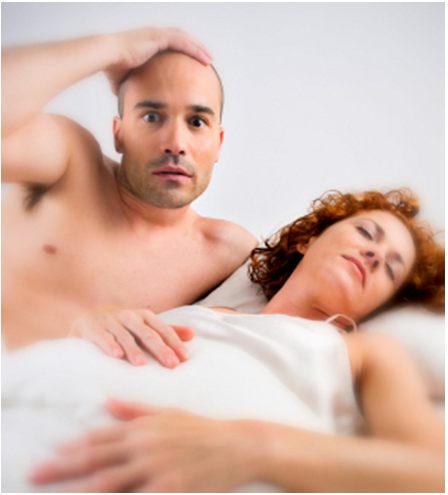 Those with active sex lives are not the only ones suffering from hair miniaturization who try and find a reasonable excuse for their predicament. Often times the person’s partner is blamed, stressful situations, bad relations, or significant changes in their lives. When viewing the issue realistically, time, genetics, and gender, are the only true contributing factors to permanent hair loss. Other environmental factors merely accelerate the speed of the genetically predisposed hair loss. Individuals who are not genetically prone to balding may lose hair because of stress or trauma, but only for a time once the stressor is gone. For people prone to hair loss, once it’s gone it is gone. That is when other options such as hair restoration is needed. Those with active sex lives are not the only ones suffering from hair miniaturization who try and find a reasonable excuse for their predicament. Often times the person’s partner is blamed, stressful situations, bad relations, or significant changes in their lives. When viewing the issue realistically, time, genetics, and gender, are the only true contributing factors to permanent hair loss. Other environmental factors merely accelerate the speed of the genetically predisposed hair loss. Individuals who are not genetically prone to balding may lose hair because of stress or trauma, but only for a time once the stressor is gone. For people prone to hair loss, once it’s gone it is gone. That is when other options such as hair restoration is needed.
Tags: reasons for hairloss, Sex and Hair Loss
Posted in hair loss complications, Hair Loss Conditions, Hair Loss Conversations | 1 Comment »
Tuesday, February 21st, 2012
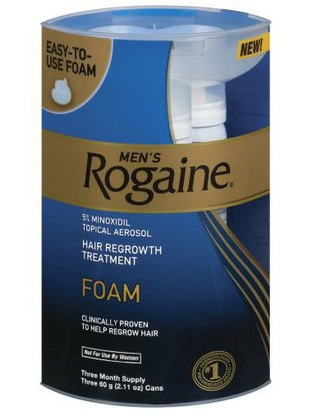 We receive a lot of questions at US Hair Restoration about the use of Minoxidil (Rogaine), and how it affects hair growth after a hair transplant procedure. There are mixed reviews people find on the internet through different websites and blogs about the Foam version of Rogaine. Some say it helps hair growth, others say it hinders, while some claim it does absolutely nothing. We receive a lot of questions at US Hair Restoration about the use of Minoxidil (Rogaine), and how it affects hair growth after a hair transplant procedure. There are mixed reviews people find on the internet through different websites and blogs about the Foam version of Rogaine. Some say it helps hair growth, others say it hinders, while some claim it does absolutely nothing.
Minoxidil (Rogaine) may be used after a hair transplantation on the newly transplanted area, for protecting the already existing hairs which are genetically predisposed to thinning. The hair grafts which are actually transplanted from the donor area require no medication for growth and maintain a permanent residence in the balding area. Those are the healthy hairs which are not affected by the hormone DHT (Dehydrotestosterone) which causes thinning and baldness.
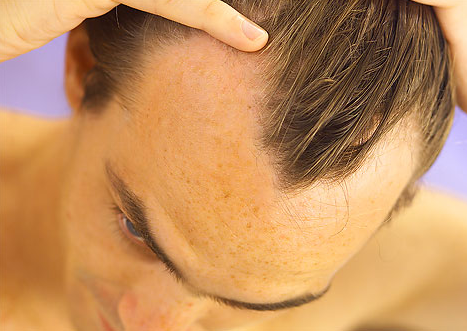 There may be some loss of existing native hair in the balding area due to shock loss, and for this we recommend Propecia for male patients to protect against. Propecia is proven to work better then Rogaine for the prevention of shock loss in men, and continues to have remarkable results in the patients who use the medication as directed. Unfortunately it does not work on women, but in these cases Rogaine does work and is a recommend option for the first few months after hair restoration surgery. There may be some loss of existing native hair in the balding area due to shock loss, and for this we recommend Propecia for male patients to protect against. Propecia is proven to work better then Rogaine for the prevention of shock loss in men, and continues to have remarkable results in the patients who use the medication as directed. Unfortunately it does not work on women, but in these cases Rogaine does work and is a recommend option for the first few months after hair restoration surgery.
Tags: female hair loss, finasteride, Male Hair Loss, minoxidil, propecia, rogaine, shock loss
Posted in after hair transplant, hair loss complications, hair loss medication, men hair restoration, women hair loss | No Comments »
Friday, October 21st, 2011
 Hair loss and hair thinning is a result of testosterone formed in different areas like the prostate gland or hair follicles, which is converted to Dihydrotestosterone (DHT) in the scalp area. Hair follicles prone to genetic male patterned baldness contain DHT receptors, thus thinning hair and loss of hair can result. Over time men produce an abundance of DHT and the molecules affect their hair follicles and cause a decrease in size and eventually see their natural hair fall out permanently. Because of this common occurrence, hair loss in men is frequent. Hair loss and hair thinning is a result of testosterone formed in different areas like the prostate gland or hair follicles, which is converted to Dihydrotestosterone (DHT) in the scalp area. Hair follicles prone to genetic male patterned baldness contain DHT receptors, thus thinning hair and loss of hair can result. Over time men produce an abundance of DHT and the molecules affect their hair follicles and cause a decrease in size and eventually see their natural hair fall out permanently. Because of this common occurrence, hair loss in men is frequent.
DHT and hair loss from having the gene for male pattern baldness are the most common factors for male pattern baldness. Women suffering from female-pattern baldness, unlike their counterparts with male-pattern baldness, are not usually characterized by higher production rates of DHT from lower levels of testosterone. On the other hand, if for a number of possible reasons, a woman has increased testosterone, she can develop female patterned baldness like a man does through the same mechanism.
Hair in the prone areas to male patterned baldness: Corners, top, and crown are filled with DHT receptors in men who suffer Androgenic Alopecia The hair on donor areas such as back and sides, however, have fewer DHT receptors. This is precisely why hair is more permanent on the sides and back and not the top and front.
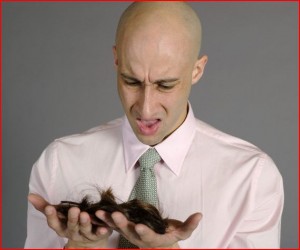
The distinction in the hair quality of different areas, such as the donor and recipient areas, allows for hair loss surgeons to remove the hair from one area and transplant it to the bald portions of the scalp. These newly transplanted hairs are permanent and immune to DHT. Finasteride (Propecia) is a drug which blocks the conversion of testosterone to DHT as a result of it blocking the enzyme alpha reductase. The amount of DHT in hair loss patients decrease when they are on Propecia and this helps to maintain healthy hair, and also helps some of the miniaturized hair become stronger.
We at US Hair Restoration often recommend medical treatment with DHT blockers in many of our patients who undergo a hair transplantation procedure in order to help maintain their own hair in addition to the newly restored, formerly balding areas because of a hair restoration surgery.
Tags: androgenetic alopecia, dht, DHT blockers, DHT receptors, dihydrotestosterone, female patterned baldness, finasteride, hair restoration surgery, propecia, testosteron
Posted in hair loss complications, Hair Loss Conditions, hair transplant, men hair restoration, women hair loss | No Comments »
Monday, May 9th, 2011
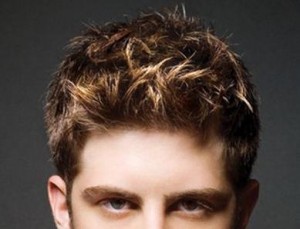 A patient once asked me why his surgery of 2850 grafts did not bear the same results after three years as some who have had the exact same number of grafts. I informed him to never compare other patients results simply based on the number of grafts alone. A patient once asked me why his surgery of 2850 grafts did not bear the same results after three years as some who have had the exact same number of grafts. I informed him to never compare other patients results simply based on the number of grafts alone.
Whenever I meet with a patient before hair transplant surgery, I intentionally educate them of what they personally should expect after their procedure. At times I do give big promises to certain patients with better quality donor hair (denser, wavier, and thicker), and some I encourage to get more than one surgery for maximum results. The overall results will be determined by donor hair quality, number of grafts, and hair to skin color contrast.
If two different patients were to be compared who have the same hair characteristics, but one is twice the thickness than the other, a microscope would be used to reveal the cross section of hair. This would reveal the one patients hair is four times thicker (A= r2) and the final result is expected to have a volume of 4 times thicker.
Many factors can contribute to poorer results from a hair transplantation surgery. Some factors may be from the patient themselves, while others situation may be due to the technique of the surgery and how well the follicles maintain post-surgery.
Tags: hair diameter, poor result, thick hair, thin hair
Posted in after hair transplant, hair loss complications, Hair Transplant Procedure, men hair restoration | No Comments »
Tuesday, December 21st, 2010
 Folliculitis following hair transplantation are skin lesions that appear pimple-like and are seen when (for any reason) hair follicles become inflamed. Folliculitis can be seen anywhere throughout the skin. The follicle and its surrounding tissues may become infected with different bacterias called Streptococcus aureus. Folliculitis following hair transplantation are skin lesions that appear pimple-like and are seen when (for any reason) hair follicles become inflamed. Folliculitis can be seen anywhere throughout the skin. The follicle and its surrounding tissues may become infected with different bacterias called Streptococcus aureus.
There are also certain variations of folliculitis which are known as “hot tub folliculitis” and “barber’s itch”. Permanent damage to the hair follicles and local hair loss on the area of infection can occur in severe cases of folliculitis.
After Hair Transplant Folliculitis
One of the most common complications of hair transplant surgery is folliculitis. Folliculitis occurs when there is blockage of hair or its corresponding sebaceous gland when newly transplanted hair is growing. Folliculitis typically appears as small, red or white-headed pimples around one or more follicular units following hair transplantation. It may present with itching, mild pain and discharge in addition to the typical redness and swelling of pimples. Most cases of folliculitis (especially those occurring after hair restoration surgery) clear spontaneously within a few days, however more extensive types of folliculitis may need medical or surgical treatment by your physician.
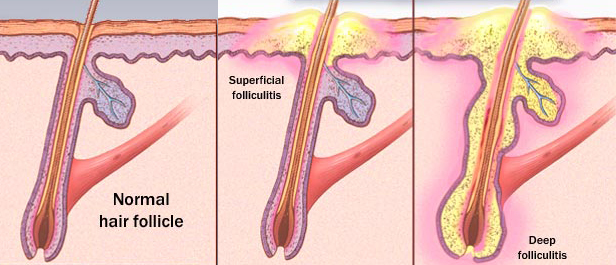
Folliculitis is typically seen a few days or even months after hair transplant surgery. They are generally difficult to be differentiated from common pimples or acne and are recommended to be left alone to clear naturally. Presence of simple folliculitis usually does not affect the growth of transplanted hair. Those instances of folliculitis that do not clear naturally within a few days of forming are considered to be more aggressive and patients are recommended to contact their hair transplant physician at that point.
Treatment
Simple folliculitis generally does not need any treatment and lesions tend to clear up on their own within a few days. Occasionally, when small instances of folliculitis become infected and are seen with spreading of redness and inflammation around the originally inflamed follicles, your physician should be notified. A physician’s evaluation is the best way to determine whether or not you need antibiotics for the treatment of your folliculitis. Occasionally, as a way to avoid use of medication or continuing infection, your doctor may alternatively decide to drain them. Draining the folliculitis is a simple procedure and can be easily done in your doctors’ office.
Tags: folliculitis, folliculitis after hair restoration, folliculitis after hair transplantation, folliculitis treatment, hair restoration and folliculitis, hair transplants and folliculitis, Streptococcus aureus, treatment of folliculitis
Posted in hair loss complications, hair transplant, Hair Transplant Procedure, men hair restoration | No Comments »
Tuesday, November 30th, 2010
Q:
Good Afternoon Dr. Mohebi,
I recently was recommended to go on a medication for body building purposes by my trainer. The medication that I am planning on starting is called ANAVAR (an anabolic steroid). Because I am currently taking Propecia, as prescribed by you, I just wanted run ANAVAR by you to make sure it would be OK to take in conjuction with Propecia.
I appreciate all of your help, Thanks!
A:
Anavar (oxandrolone) is a weak androgen and is considered an anabolic steroid. It is indicated as adjunctive therapy to enhance weight gain after weight loss due to an extensive surgery, infectious disease, trauma and so on. Anavar has also been prescribed to some patients who for no reason fail to gain weight despite of  proper nutrition and work out schedules. It may also be used to maintain normal weight or to prevent the catabolism due to prolonged administration of corticosteroids. proper nutrition and work out schedules. It may also be used to maintain normal weight or to prevent the catabolism due to prolonged administration of corticosteroids.
There have been some online reports of hair loss with Anavar’s use and some exagerated hair loss reports in patients who take both Propecia (finasteride) and Anavar (oxandrolone) in conjunction. Although my personal searches in medical publications have never revealed any studies supporting this information, reports can be found online by its claimed users.
Overall, my general recommendation is: unless there is a strong medical indication for its use, people with any evidence of male patterned baldness should stay away from anabolic steroids. Although you may find some anabolic steroids over the counter, your family doctor should always be involved and aware of any anabolic steroids that you take as part of your body enhancing plan.
Tags: anabolic steriods and hair loss, Anavar, finasteride, hair loss, oxandrolone, propecia
Posted in hair loss complications, hair loss medication, hair loss products, hair transplant, men hair restoration, Uncategorized | No Comments »
Tuesday, November 30th, 2010
Following a hair transplant surgery, hiccups may develop due to several factors. Some of the main factors to cause this are: the medication that patient takes, possible local irritation of some nerve endings in the donor area (especially in strip technique hair transplant) and lastly, a patient’s diet.
These three possible causes are each explained in depth below.
Medication: Some medications that are given to the patient after a hair transplant surgery (i.e. – steroids) may increase the chance of developing temporary hiccups.
Diet: In the case that a patient develops hiccups due to his/her eating or drinking habits, his/her diet needs to be controlled. Alcoholic beverages, carbonated beverages or taking in large volumes of food may also increase the chance of developing hiccups.
Local nerve irritation: The local irritation of some nerve endings, such as the posterior auricular nerve or other branches of the cervical plexus may stimulate the phrenic nerve thus also causing hiccups.
If hiccups persist severely or beyond a few hours you are urged to contact your hair transplant surgeon for medical evaluation and treatment. Your doctor may prescribe you chlorpromazine (Thorazine) and advise you to continue taking these pills for a few days to avoid re-occurance of the hiccups.
Tags: after hair transplant, cervical plexus, chlorpromazine, hiccup, Hiccups, phrenic nerve, Thorazine
Posted in hair loss complications, hair transplant, Uncategorized | No Comments »
Saturday, April 10th, 2010
Q:
Several weeks have passed since my hair transplant surgery. It has come to my attention that there’s a small bald spot near my left ear. As told, I was keeping that area clean the last few weeks, but no hair has grown back, it is still the same. I do not think it is getting larger. For some reason, the bald area is more sensitive to heat or cold temperatures. I was washing my hair today, and a scab fell off, but it was about the same size as the bald spot.
Another thing, I feel numb in the surrounding area of the bald spot. For me, I’ve never seen a bald spot in my donor wound until now. I’m wondering what I can do about it. I guess trauma leads to falling out of hair in donor wound areas as well. Just to let you know, I’ve been taking doses of finasteride daily, before, during the time I had surgery, and after surgery. Comparing to times past, I think I’ve taken pretty nice care of my head vs. the other times I had hair transplant surgeries, so I’m a bit concerned.
I wonder if the hair will ever grow back, as long as there isn’t a scar over it. My bald spot is about the size of a silver dollar; it looks quite noticeable. The bald spot has been overly sensitive the whole time after the surgery, but it wasn’t infected and there was no blood oozing out of it. I’m thinking that maybe the hair surrounding the wound fell off because of shock.
Your advice would be much appreciated,
A:
I appreciate the email. You guessed right about the hair loss probably being caused by shock around the area of your donor wound. There must have been really tight close-up of the donor area. Maybe the hard close-up caused the shock loss. The two areas, on either side of the scalp, are very vulnerable to shock loss. Usually, when shock loss occurs, it happens on both sides. Shock loss occurring around a donor wound is, most of the time, reversible. It takes about six months for hair lost because of shock loss to grow back. It’s a slow, but certain process. Stay patient.
At this time, there is not a lot that can be done. But it is important that a doctor takes a look at your shock loss. Also, the feeling of numbness in the donor area will last up from a few weeks to months. The numbness is caused by inflaming of the healing area, this has an effect on the nerves in that area. It will heal on its own time.
Tags: donor hair transplant, donor wound after hair transplant, hair restoration and donor scar, shock loss
Posted in hair loss complications, hair transplant, Uncategorized | No Comments »
Wednesday, March 3rd, 2010
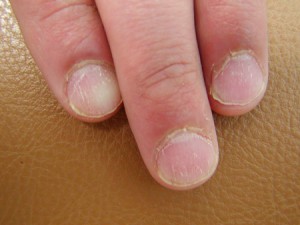 I’m a man living with Alopecia Universalis, which hasn’t been an issue from an aesthetic perspective since I’m 68 years old, secure with myself and where I’m at in life, and possess an optimistic perspective about life and believe in a higher power at work in the world. But, there is one issue disturbing me, my finger nails and toe nails. The nail bed has pits and seems to be eroding. I don’t know what options I have at this point. I tried having my nails coated with acrylic at a nail salon and, for a majority of the time, it seems to be good enough for me until they grow long and break. I’m a man living with Alopecia Universalis, which hasn’t been an issue from an aesthetic perspective since I’m 68 years old, secure with myself and where I’m at in life, and possess an optimistic perspective about life and believe in a higher power at work in the world. But, there is one issue disturbing me, my finger nails and toe nails. The nail bed has pits and seems to be eroding. I don’t know what options I have at this point. I tried having my nails coated with acrylic at a nail salon and, for a majority of the time, it seems to be good enough for me until they grow long and break.
To aid in restoring my nails, I’m wondering if I ought to be taking vitamin pills, like Biotin or Zinc?
Thank you and please advise,
-
A:
Thanks for your email. I love your attitude about Alopecia Universalis. Alopecia Universalis is a more severe type of Alopecia Areata. You ask a good question. Personally, I searched and didn’t find an answer every place I looked. It was a topic of conversation with a few of my dermatologist friends (when nail health is involved, dermatologists are familiar with this condition and I think they’ve seen or dealt with comparable cases of Alopecia Universalis or Alopecia Areata nail deterioration).
I did find two answers that might be of help to you, though.
1. Well, I’ve seen a good number of people with major deformities of their nails, including dents, flaking, rippled nails, and distal phalanges with granulation tissue, symptoms which started after these people went in for acrylic manicures. The nails end up becoming kind of rough and the nail beds get damaged.
2. Hey Doc! Unfortunately, there’s not much a person can do about treating the nail pitting that is a part of having Alopecia Universalis or Alopecia Areata. A person can coat it with acrylics, that’s OK, but acrylics will, without a doubt, further corrode the nail bed over the long haul. It’s better to use nail polish or manicure the nails. Taking Biotin is OK if a person is trying to have healthier-looking nails, but it’s not the solution to the underlying problem. There’s also the option of taking topical steroids to see whether that makes any kind of difference. Good luck.
Tags: alopecia areata, nail changes with alopecia
Posted in hair loss complications | No Comments »
|
|
 Diabetes is a common disease that has fallen upon many Americans. Often times people suffering from Diabetes will come to US Hair Restoration wondering whether they qualify for a hair transplant procedure. The question we often ask our patients is how well their diabetes is maintained.
Diabetes is a common disease that has fallen upon many Americans. Often times people suffering from Diabetes will come to US Hair Restoration wondering whether they qualify for a hair transplant procedure. The question we often ask our patients is how well their diabetes is maintained.



 Hair loss and hair thinning is a result of testosterone formed in different areas like the prostate gland or hair follicles, which is converted to Dihydrotestosterone (DHT) in the scalp area. Hair follicles prone to genetic male patterned baldness contain DHT receptors, thus thinning hair and loss of hair can result. Over time men produce an abundance of DHT and the molecules affect their hair follicles and cause a decrease in size and eventually see their natural hair fall out permanently. Because of this common occurrence, hair loss in men is frequent.
Hair loss and hair thinning is a result of testosterone formed in different areas like the prostate gland or hair follicles, which is converted to Dihydrotestosterone (DHT) in the scalp area. Hair follicles prone to genetic male patterned baldness contain DHT receptors, thus thinning hair and loss of hair can result. Over time men produce an abundance of DHT and the molecules affect their hair follicles and cause a decrease in size and eventually see their natural hair fall out permanently. Because of this common occurrence, hair loss in men is frequent.



 proper nutrition and work out schedules. It may also be used to maintain normal weight or to prevent the catabolism due to prolonged administration of corticosteroids.
proper nutrition and work out schedules. It may also be used to maintain normal weight or to prevent the catabolism due to prolonged administration of corticosteroids.